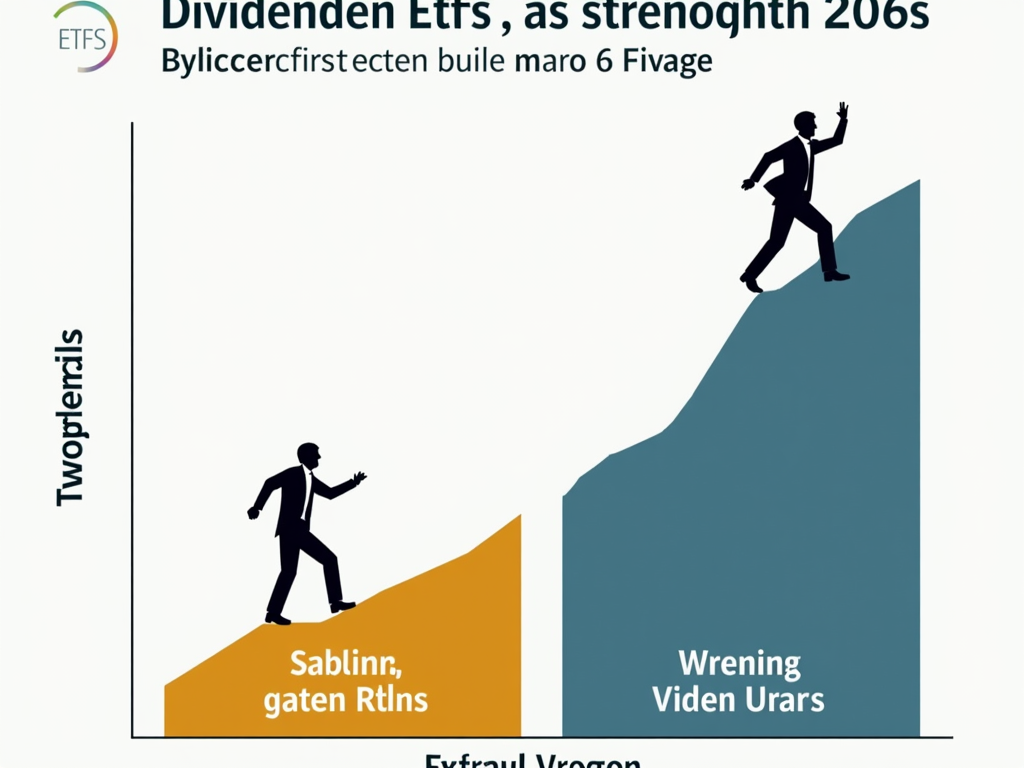In the world of investments, investors often face the choice between Dividend ETFs and Growth ETFs. While Dividend ETFs promise regular returns and stability, Growth ETFs attract with the potential for long-term capital appreciation. This article highlights the differences in investment goals and risk profiles, comparing the investment strategies of both types of ETFs. In this way, investors can make informed decisions that align with their individual goals.
Dividend ETFs vs. Growth ETFs: Targeted Investments in Focus

In the world of Exchange Traded Funds, investors frequently find themselves having to decide between Dividend ETFs and Growth ETFs. These two categories offer different pathways to maximize investments, depending on the specific goals of the investor.
Investment goals play a central role in the choice between these types of ETFs. Dividend ETFs are designed to generate regular income by investing in companies with strong dividends. These companies, often established and with stable cash flows, provide investors with a steady income. These ETFs are ideal for those who value stability and continuous income streams.
In contrast, Growth ETFs focus on capital growth by investing in companies with high potential for innovation and growth. These companies, often from dynamic sectors such as technology and biotechnology, promise high returns. This makes Growth ETFs attractive to investors with long time horizons who are willing to accept more volatile markets and the associated risks.
The risk profile of these types of ETFs reflects their investment objectives. Dividend ETFs are considered more stable investments, with a more conservative risk profile. Their focus on established companies provides some protection against market turbulence, as dividends tend to be less affected by market fluctuations.
Growth ETFs, on the other hand, are riskier and more volatile, as they invest in companies with uncertain growth potential. These ETFs may react more sensitively in bear markets, but they also offer the opportunity for significant value appreciation in bull markets.
Investment strategies also vary between these ETFs. Dividend ETFs often favor a “Buy-and-Hold” strategy. Here, investors benefit from stable dividend distributions. Growth ETFs often require a more active management strategy, as investors need to regularly adjust their portfolios to maximize growth opportunities.
In summary, Dividend ETFs offer a defensively adjusted risk strategy focused on income, while Growth ETFs represent the pursuit of significant capital growth. The decision between these investments should therefore be based on a thoughtful evaluation of individual investment goals and risk tolerance.
Strategic Considerations: Comparing Dividend ETFs and Growth ETFs

In the world of Exchange-Traded Funds (ETFs), Dividend ETFs and Growth ETFs stand out for their different investment objectives and market movements. This variety offers investors the opportunity to choose based on their financial goals and risk tolerance.
Dividend ETFs are characterized by their focus on stable income streams. They primarily invest in companies that regularly distribute dividends, thus ensuring a constant flow of income for investors. This model is ideal for investors who value regular returns, for example, to generate additional income for retirement. A significant example is the JP Morgan Nasdaq Equity Premium Income ETF, which stands out for its high monthly distributions, combined with some growth potential. These ETFs also offer the advantage of being less affected by short-term market fluctuations, as they often focus on established companies with robust cash flows.
On the other hand, there are Growth ETFs, which strategically invest in companies with high growth potential. These ETFs are perfect for investors who focus on long-term capital and are willing to accept a higher degree of risk. The risk primarily comes from investments in emerging sectors like technology and health, which may benefit from dynamic market changes. Growth ETFs tend to fluctuate in volatile markets, but this also offers significant profit opportunities when the underlying companies meet their growth forecasts.
The choice between Dividend ETFs and Growth ETFs heavily depends on the individual goals of the investor. Those who place greater value on stable and reliable returns are likely to prefer Dividend ETFs. Conversely, those speculating on capital growth will focus on Growth ETFs, as these have the potential for higher total returns. In a well-diversified portfolio, the combination of both types of ETFs can offer both security and growth opportunities.
Understanding the respective strategy and associated risks is essential for making informed investment decisions. Ultimately, both Dividend ETFs and Growth ETFs offer valuable tools for achieving different financial objectives, with the right balance that should be personalized.